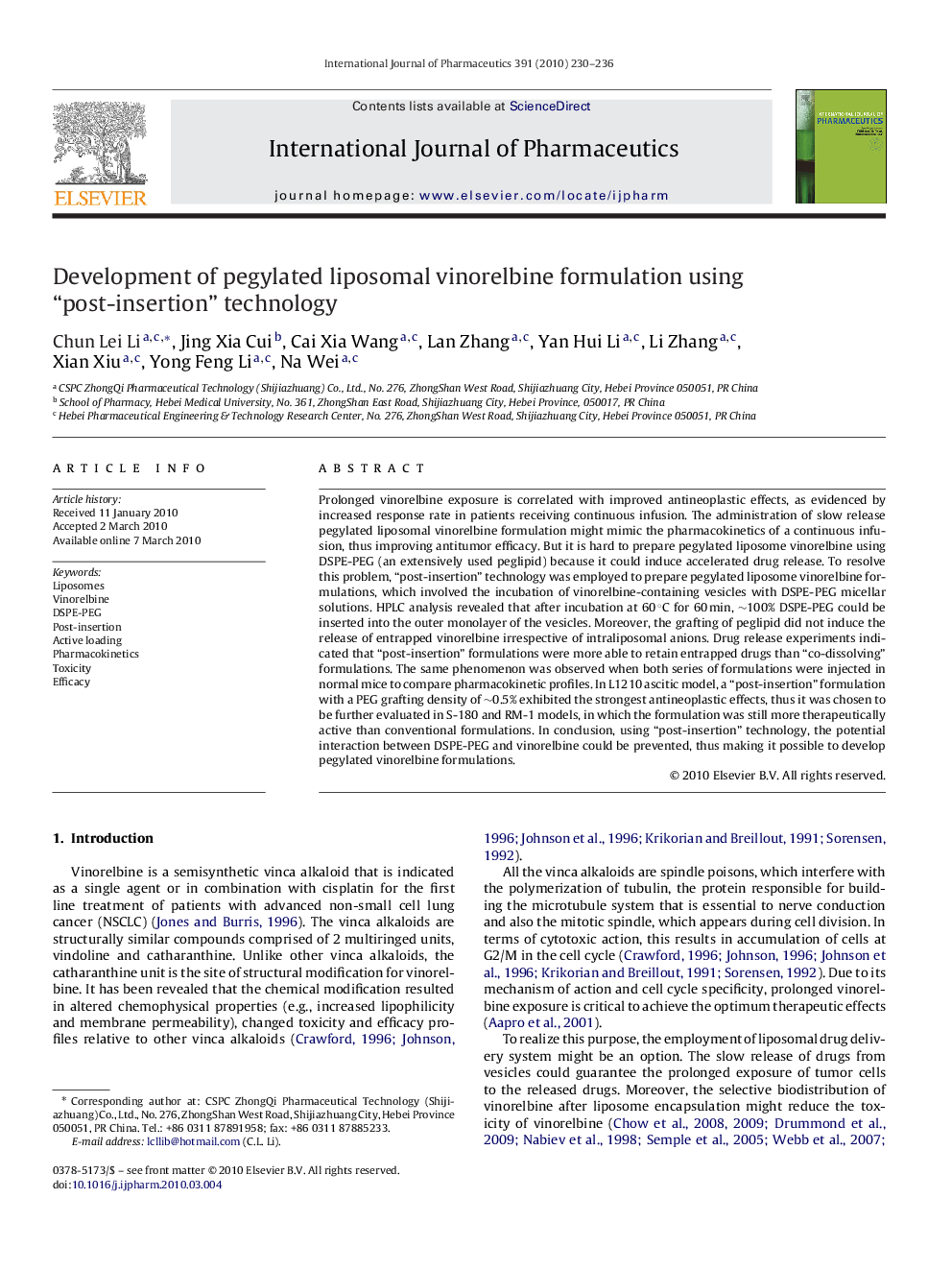| Article ID | Journal | Published Year | Pages | File Type |
|---|---|---|---|---|
| 2504116 | International Journal of Pharmaceutics | 2010 | 7 Pages |
Prolonged vinorelbine exposure is correlated with improved antineoplastic effects, as evidenced by increased response rate in patients receiving continuous infusion. The administration of slow release pegylated liposomal vinorelbine formulation might mimic the pharmacokinetics of a continuous infusion, thus improving antitumor efficacy. But it is hard to prepare pegylated liposome vinorelbine using DSPE-PEG (an extensively used peglipid) because it could induce accelerated drug release. To resolve this problem, “post-insertion” technology was employed to prepare pegylated liposome vinorelbine formulations, which involved the incubation of vinorelbine-containing vesicles with DSPE-PEG micellar solutions. HPLC analysis revealed that after incubation at 60 °C for 60 min, ∼100% DSPE-PEG could be inserted into the outer monolayer of the vesicles. Moreover, the grafting of peglipid did not induce the release of entrapped vinorelbine irrespective of intraliposomal anions. Drug release experiments indicated that “post-insertion” formulations were more able to retain entrapped drugs than “co-dissolving” formulations. The same phenomenon was observed when both series of formulations were injected in normal mice to compare pharmacokinetic profiles. In L1210 ascitic model, a “post-insertion” formulation with a PEG grafting density of ∼0.5% exhibited the strongest antineoplastic effects, thus it was chosen to be further evaluated in S-180 and RM-1 models, in which the formulation was still more therapeutically active than conventional formulations. In conclusion, using “post-insertion” technology, the potential interaction between DSPE-PEG and vinorelbine could be prevented, thus making it possible to develop pegylated vinorelbine formulations.
